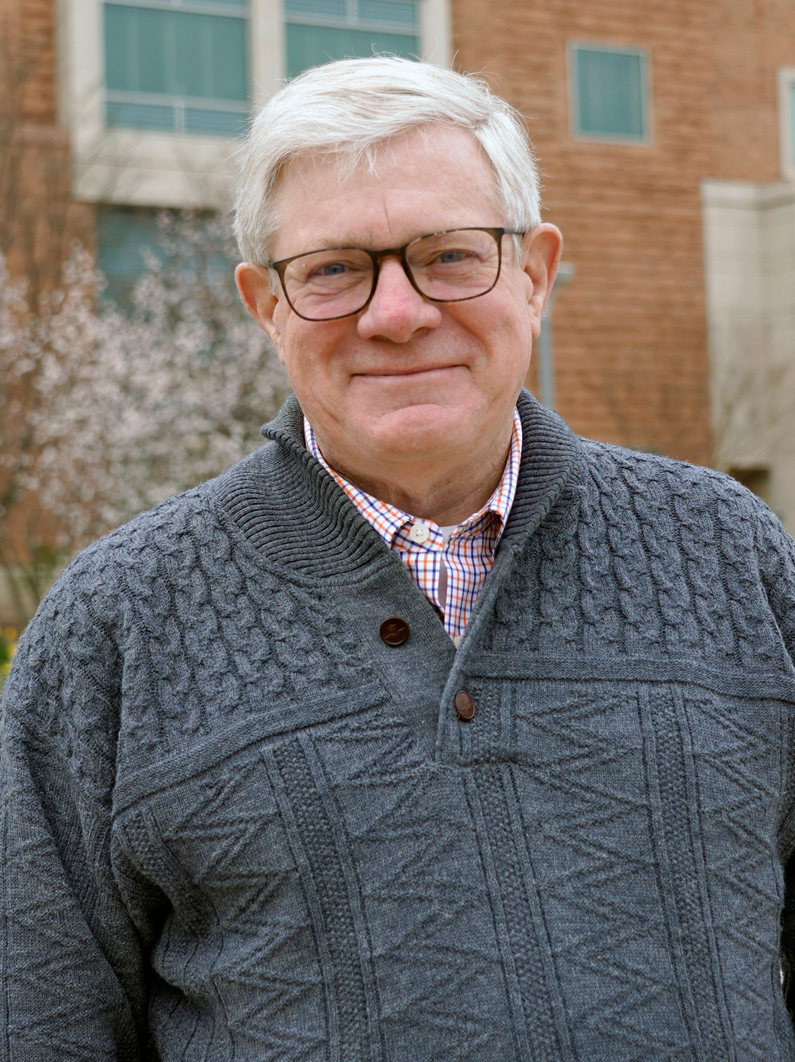Bond detailed to support CC leaders on SRLM
The right person at the right time

A staggering degree of thought went into designing blueprints for the Surgery Radiology, and Lab Medicine (SRLM) tower that will soon begin to rise from the northwest side of the Clinical Center.
If one were to just as carefully design the ideal person to help figure out how to outfit, operationalize, and, indeed, optimize that space, well, those "blueprints" might look a lot like…. Richard Bond's resume. Fortunately, the aforementioned Bond already works "across the street" at Uniformed Services University of the Health Sciences (USUHS), on the grounds of Naval Support Activity Bethesda. Now, thanks to a special arrangement with USUHS, Bond is detailed to the Clinical Center part time for that very purpose.
Although Bond will retain his job at USUHS as Special Assistant to the President for Strategic Infrastructure Investments, he will provide temporary support to the Clinical Center a couple days per week.
"I worked extensively with Rick Bond the last 15 years or so when I was in the Army. He has extraordinary experience in overseeing the construction of healthcare facilities and laboratories in DoD as well as in the VA," said Clinical Center Chief Executive Officer Dr. James Gilman. "We are indeed fortunate that the folks at Uniformed Services University of the Health Sciences agreed to share him with us and we cannot thank Dr. Jonathan Woodson, President of USUHS, enough for his support."
Bond is a registered Architect, and his resume includes degrees from top universities in architecture, engineering, and business. A retired US Army colonel, his military specialty was oversight of planning, programming, design and construction of medical treatment and research facilities worldwide. His service culminated as Commander of the US Army Health Facility Planning Agency.
After the Army, he held lofty positions in Construction and Facility/Project Management in private industry and at the Department of Veterans Affairs. The man has eaten billion dollar projects for breakfast.
The secret sauce, however, is that his technical expertise is leavened with the wisdom, savvy, and "softer" skills gained from all that experience: stakeholder relations, problem-solving, collaboration, acculturation.
"Rick will provide a very influential voice connecting Clinical Center leaders to the project managers at the NIH Office of Research Facilities," said Gilman. "Rick is expert in the language of healthcare facilities while also understanding the language of construction companies and the building trades."
Added Clinical Center Chief Operating Officer Pius Aiyelawo, "Rick has all the required expertise, experience, and an eye for detail in facility and project management. We are thrilled to have him onboard as the CC SRLM Project Executive."
Bond will work closely with Gilman and Aiyelawo to ensure timely decision making, resource planning and preparation for the successful occupancy of the SRLM.
"New buildings mean new ways of doing business," said Bond. "Long established inter-relationships of people and processes will change, and navigating that subtle cultural change is sometimes the trickiest part." For a successful transition, Bond says planning should start now. High quality patient care needs to be seamless from pre-SRLM to post-occupancy, and upfront planning is essential to better safety, efficiency and morale.
Director of the Office of Research Facilities (ORF) Dan Wheeland commented, "As a conduit between the CC and ORF, Rick will ensure that the CC perspectives and priorities are coordinated and harmonized. So, Rick's appointment will benefit a number of entities."
Bond echoed that success will be a team effort. "This construction effort is tremendously complex, from the siting and the building systems to the technology, and I have full confidence that ORF will overcome all of the inherent challenges and deliver a transformative building to the CC. Our job, in collaboration, is to be prepared to occupy and bring that building to life as expeditiously as possible - the endgame - in the interest of advancing patient care and the discovery process," Bond explained.
Within the Clinical Center, that coordination goes beyond the departments whose names form "SRLM". Think: equipment, materials management, IT, contracting, hospital epidemiology, communications, and more. A big task, but one to which Bond is no stranger.
Bond says staff in any affected departments can reach out to him about "what's keeping them up at night". If he doesn't know the solution right away, he's poised to find out, and intuitively has a good sense of "what right looks like".

- Justin Cohen